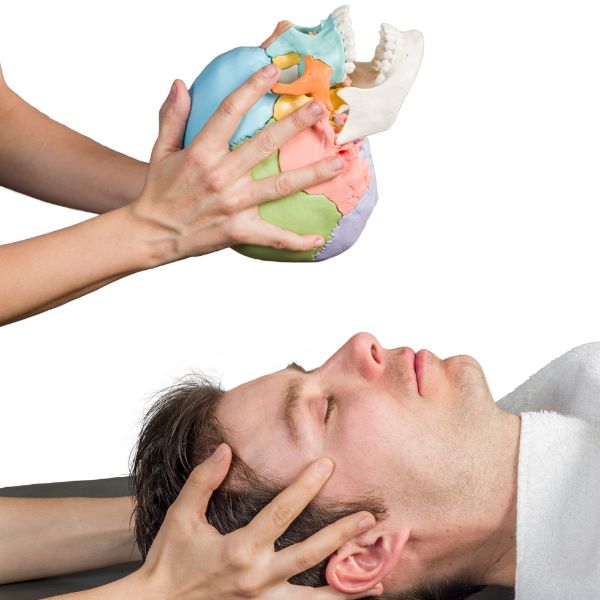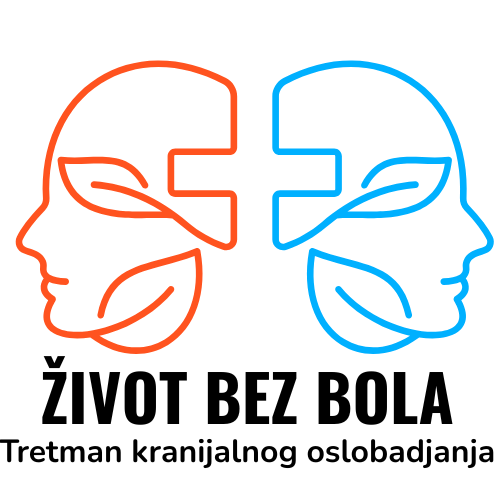Craniosacral Therapy – a non-invasive method for deep relaxation and a life without pain

What is Craniosacral Therapy?
Craniosacral Therapy (CST) is a gentle, holistic approach that affects both body and mind. Developed by osteopath John E. Upledger in the early 20th century, CST is based on the idea that cranial bones subtly move and that this rhythm influences our health. During the session, the therapist focuses on subtle body rhythms—known as the craniosacral rhythm—which reflect the “breathing” of the central nervous system. Through light touch, the therapist listens to the client’s body and supports it in releasing tension and restrictions.
This therapy is uniquely gentle yet deeply effective. Unlike massage or chiropractic adjustments, there are no forceful movements or strong pressure. The body is not pushed into correction; instead, its natural self-healing ability is gently encouraged, leading to better integration of body and mind. Many clients describe the therapy as a deeply calming experience, after which they feel rested, relaxed, and lighter.
How does Craniosacral Therapy work?
CST supports the body’s natural mechanisms in resolving the effects of stress on the central nervous system. With a feather-light touch (about 5 grams of pressure), the therapist works on the craniosacral system—cranial bones, spine, membranes, and cerebrospinal fluid—to release tension and blockages. When membranes and fluid flow freely, the nervous system functions more efficiently. As a result, the body releases stress more easily, pain is reduced, and internal systems work more harmoniously.
The body’s natural rhythm is key. Each person has a subtle internal pulse, similar to a tide, reflecting the cerebrospinal fluid’s flow. Trauma, stress, or illness may disturb this rhythm. The therapist gently places their hands on specific points (head, neck, sacrum, feet, etc.), listening for imbalances and using soft fascial techniques to restore balance. The goal is not to force a correction, but to support the body in finding its own equilibrium and healing path.
Indications for Craniosacral Therapy
Headaches and migraines
Neck and back pain
TMJ dysfunction (jaw issues)
Stress and chronic burnout
Sleep problems (insomnia, restless sleep)
Post-traumatic stress and emotional tension
Anxiety and body tension
Birth trauma in babies and mothers
Colic and breastfeeding issues in infants
Nervous system hypersensitivity
Learning and attention difficulties in children
Post-surgical or injury-related tension
Digestive issues related to stress
Poor posture and body asymmetry
General fatigue and low energy
Stress prevention and mind-body balance

"During craniosacral therapy, the client typically lies relaxed on the table while the therapist gently follows the body’s rhythm and helps release tension."
Chiropractic Milan
What to expect during a session
You remain fully clothed and lie down in a calm, quiet environment. The therapist gently places their hands on areas such as your head, spine, sacrum, or feet, using subtle touch to sense restrictions. Sessions typically last 45–60 minutes and induce deep relaxation—many clients fall asleep. Afterward, most report feeling lighter, more balanced, and at ease. Each session is tailored to individual needs, and mild rest is recommended after the treatment.

Discover How CFR Can Improve Your Health and Well-Being.
Contact our chiropractor today and schedule a free consultation.

